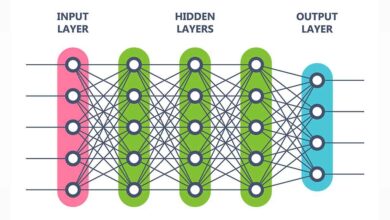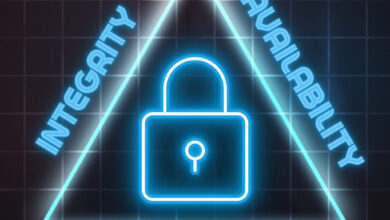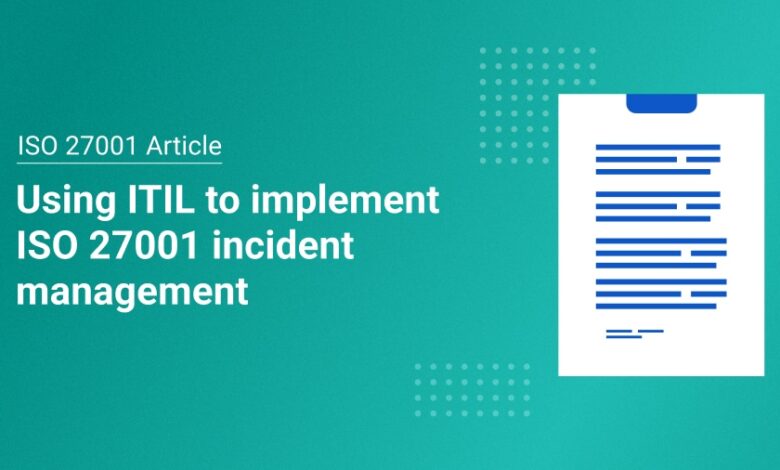
Common ISO 27001 Pitfalls and How to Avoid Them
Common iso iec 27001 pitfalls and how to avoid them – Common ISO 27001 pitfalls and how to avoid them – that’s the million-dollar question for any organization serious about information security. ISO 27001 is a gold standard, but even the best-laid plans can crumble if you stumble into common traps. This post dives into the most frequent missteps organizations make during ISO 27001 implementation, from inadequate risk assessments to neglecting crucial security awareness training.
We’ll explore practical strategies to help you navigate these challenges and build a truly robust information security management system (ISMS).
We’ll cover everything from strengthening your risk assessment methodology and crafting effective security policies to implementing robust access controls and developing a comprehensive incident response plan. We’ll also look at the often-overlooked areas like third-party risk management and the importance of regular monitoring and review. Get ready to tighten up your security posture and avoid the pitfalls that can derail your ISO 27001 journey!
Inadequate Risk Assessment and Treatment
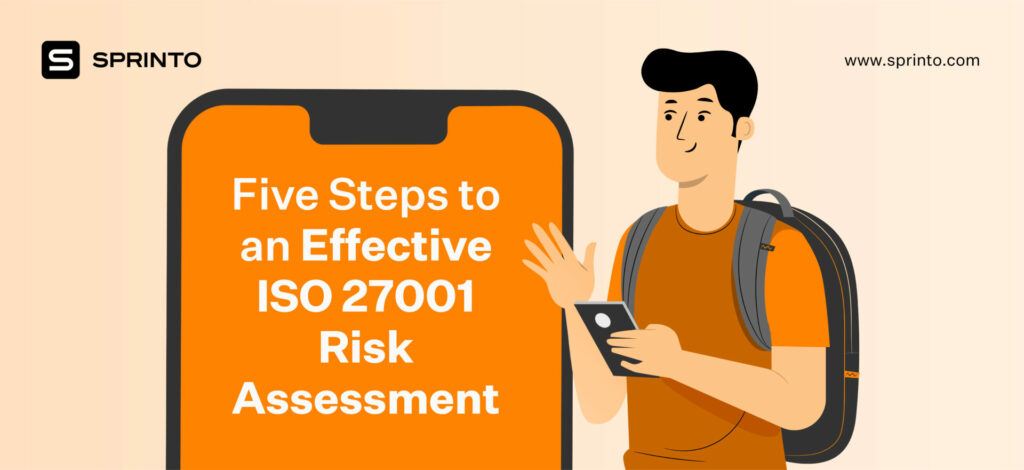
Getting ISO 27001 certification isn’t just about ticking boxes; it’s about building a robust security posture. A common stumbling block for many organizations is a flawed risk assessment process. Failing to properly identify, analyze, and treat risks leaves your information assets vulnerable, undermining the entire ISMS framework. This section dives into the common pitfalls and how to avoid them.
Insufficient Scope in Risk Assessment
A poorly defined scope is a recipe for disaster. Organizations often overlook critical assets, processes, or threats, leading to an incomplete and ultimately ineffective risk assessment. For example, a company might focus solely on IT infrastructure, neglecting the risks associated with physical security, human error, or third-party vendors. This narrow focus can leave significant vulnerabilities exposed. A comprehensive risk assessment requires a holistic view, encompassing all aspects of the organization’s information assets and their associated risks.
This includes considering internal and external threats, legal and regulatory requirements, and the organization’s business context. A clearly defined scope, documented and agreed upon by relevant stakeholders, is crucial for a successful risk assessment.
Inaccurate Risk Rating
Accurately rating risks is paramount. Organizations often struggle with consistent and objective risk rating, relying on subjective opinions rather than data-driven analysis. This can lead to misallocation of resources, prioritizing less critical risks over more significant ones. For instance, a company might overestimate the likelihood of a specific threat while underestimating the impact, leading to insufficient mitigation efforts. Utilizing a standardized risk rating matrix, incorporating qualitative and quantitative factors, ensures consistency and objectivity.
Regular calibration sessions with risk assessment team members can improve accuracy and reduce subjective biases.
Effective Risk Treatment Strategies
Once risks are identified and rated, appropriate treatment strategies must be implemented. These strategies aim to reduce the likelihood or impact of identified risks to an acceptable level. Several effective strategies include:
- Risk Avoidance: Eliminating the activity or asset that gives rise to the risk. For example, outsourcing a particularly risky process to a trusted third-party vendor.
- Risk Reduction: Implementing controls to reduce the likelihood or impact of the risk. This could involve installing firewalls, implementing access controls, or providing security awareness training to employees.
- Risk Transfer: Shifting the risk to a third party, such as purchasing insurance or outsourcing security responsibilities.
- Risk Acceptance: Acknowledging the risk and accepting the potential consequences. This is only appropriate for risks that are deemed low in likelihood and impact.
Implementing these strategies requires careful planning, resource allocation, and ongoing monitoring. The chosen strategy should be documented, along with the rationale for its selection.
Documenting Risk Assessments
Meticulous documentation is vital for demonstrating compliance with ISO 27001. The documentation should clearly Artikel the scope of the assessment, the methodology used, the identified risks, the risk ratings, the selected treatment strategies, and the responsible parties. This documentation should be regularly reviewed and updated to reflect changes in the organization’s environment and risk profile. Using a standardized template ensures consistency and facilitates easy review.
Regular audits of the risk assessment process help maintain its effectiveness and compliance.
Risk Assessment Methodologies
| Methodology | Strengths | Weaknesses | Suitability |
|---|---|---|---|
| Qualitative Risk Assessment | Simple, easy to understand, requires minimal data | Subjective, less precise, difficult to compare risks across different areas | Suitable for initial assessments or where quantitative data is scarce |
| Quantitative Risk Assessment | Objective, precise, allows for better resource allocation | Complex, requires significant data, can be time-consuming | Suitable for organizations with mature risk management processes and readily available data |
| Semi-Quantitative Risk Assessment | Balances simplicity and precision, incorporates both qualitative and quantitative elements | Can still be subjective depending on the chosen scales and metrics | A good compromise between qualitative and quantitative approaches |
| Failure Mode and Effects Analysis (FMEA) | Systematic approach to identify potential failures and their impact | Can be time-consuming and require significant expertise | Suitable for identifying and mitigating potential failures in specific processes or systems |
Weak Policy and Procedure Implementation
Successfully implementing ISO 27001 isn’t just about ticking boxes; it’s about embedding robust security practices into the very fabric of your organization. A common pitfall, however, is the failure to effectively translate high-level policies into practical, actionable procedures that staff understand and follow. This often leads to a disconnect between intended security measures and real-world implementation, leaving vulnerabilities exposed.Many organizations struggle to bridge the gap between policy and practice.
The challenge lies in translating abstract security principles into concrete steps that employees can readily integrate into their daily workflows. This requires careful consideration of the specific context of each role and department, ensuring that procedures are tailored to individual needs and responsibilities, rather than being a generic, one-size-fits-all approach. Failure to do so results in confusion, frustration, and ultimately, a lack of adherence to crucial security protocols.
Effective Communication of Security Policies and Procedures
Clear and concise communication is paramount. Policies and procedures should be written in plain language, avoiding jargon and technical terms that employees may not understand. They should be readily accessible, ideally through a centralized online portal or intranet, and regularly updated to reflect changes in the organizational environment or evolving security threats. Furthermore, training sessions, interactive workshops, and regular reminders through emails or internal newsletters can reinforce understanding and encourage adherence.
Using visual aids like flowcharts or infographics can greatly improve comprehension and retention. For example, a simple flowchart illustrating the steps for reporting a security incident can be far more effective than a lengthy written procedure.
Monitoring and Enforcing Adherence to Policies and Procedures
Monitoring and enforcement are crucial for ensuring that policies and procedures are actually followed. This involves regular audits, both internal and external, to assess compliance. These audits should not only focus on identifying gaps but also on understanding the root causes of non-compliance. Technology can play a significant role here; access control logs, security information and event management (SIEM) systems, and other monitoring tools can provide valuable insights into user behavior and potential security breaches.
Disciplinary measures, while necessary in some cases, should be a last resort. A more proactive approach focuses on providing support and guidance to employees, addressing any concerns or misunderstandings they may have. Regular feedback and recognition for compliance further encourage adherence.
Training Program Addressing Common Policy and Procedure Misunderstandings
A comprehensive training program is essential for mitigating misunderstandings. This should not be a one-off event but rather an ongoing process incorporating regular refresher courses and updates. The program should be tailored to different roles and responsibilities, focusing on the specific security requirements of each job function. Interactive elements, such as scenario-based exercises and quizzes, can enhance engagement and knowledge retention.
For instance, a training module for IT staff might focus on secure coding practices and incident response, while a module for administrative staff might concentrate on data handling and access control procedures. Regular feedback mechanisms, including surveys and focus groups, can help identify areas where further clarification or training is needed. The effectiveness of the training program should be regularly evaluated to ensure it remains relevant and impactful.
Insufficient Access Control Management
Access control is the cornerstone of a robust information security system. Without it, even the most meticulously crafted policies and procedures are vulnerable. Failing to properly manage access leaves your organization open to data breaches, unauthorized modifications, and significant financial losses. This section will explore common access control vulnerabilities and provide practical strategies for improvement.
So you’re tackling ISO 27001? Common pitfalls include weak access controls and insufficient risk assessments. Building secure apps is key, and that’s where understanding the future of development comes in, like what’s discussed in this insightful article on domino app dev the low code and pro code future. By leveraging these modern approaches, you can build more secure, compliant applications from the ground up, significantly reducing your ISO 27001 compliance headaches.
Remember, proactive security measures are your best defense!
Weak access control manifests in various ways, often stemming from a lack of awareness or a misguided belief that simple measures are sufficient. This often leads to a false sense of security, exposing sensitive data and systems to undue risk. A proactive approach to access control is essential, not merely a box to tick on a compliance checklist.
Common Access Control Vulnerabilities
Weak passwords and excessive user privileges are two of the most prevalent vulnerabilities in access control. Weak passwords, such as easily guessable combinations or those reused across multiple platforms, create easy entry points for malicious actors. Conversely, granting users more access rights than necessary (“excessive privileges”) increases the potential damage from a compromised account. A compromised user with excessive privileges can inflict far more damage than a user with restricted access.
For example, a standard employee with administrative privileges could potentially delete crucial data or install malware.
Robust Access Control Mechanisms
Multi-factor authentication (MFA) significantly enhances security by requiring users to provide multiple forms of verification before granting access. This can include something they know (password), something they have (security token), and something they are (biometric scan). Role-based access control (RBAC) assigns permissions based on an individual’s role within the organization, ensuring that users only have access to the resources necessary for their job function.
This minimizes the risk associated with excessive privileges. For instance, a marketing assistant might only need access to marketing materials and email, while a system administrator requires broader access to manage servers and networks.
Comparison of Access Control Models
Several access control models exist, each with its own strengths and weaknesses. Role-Based Access Control (RBAC), as mentioned above, is widely used for its efficiency and scalability. Attribute-Based Access Control (ABAC) offers a more granular approach, defining access based on attributes of the user, resource, and environment. This is particularly useful in complex environments with many variables.
Mandatory Access Control (MAC) is a highly restrictive model often used in government and military settings, where security is paramount. The choice of model depends heavily on the specific needs and risk profile of the organization. A small business might find RBAC sufficient, while a large financial institution may require a more sophisticated model like ABAC.
Access Control Review Checklist
Regular review and improvement of access control measures are critical. This checklist helps assess and enhance your organization’s access control posture:
Before using this checklist, ensure you have a complete inventory of all systems, applications, and data assets within your organization. This forms the basis for effective access control management.
- Password Policy: Are passwords sufficiently complex and regularly changed? Is MFA implemented?
- User Privileges: Are user privileges regularly reviewed and minimized to the principle of least privilege? Are there any accounts with excessive privileges that require immediate attention?
- Access Control Model: Is the chosen access control model appropriate for the organization’s size, complexity, and risk profile?
- Access Logs: Are access logs regularly monitored and analyzed for suspicious activity? Are these logs properly secured to prevent tampering?
- Security Awareness Training: Does the organization provide regular security awareness training to employees on best practices for password management and data security?
- Regular Audits: Are regular security audits conducted to identify vulnerabilities and ensure compliance with access control policies?
- Incident Response Plan: Does the organization have a robust incident response plan in place to address security breaches and unauthorized access attempts?
Neglecting Security Awareness Training: Common Iso Iec 27001 Pitfalls And How To Avoid Them

Ignoring security awareness training is a critical oversight in any organization’s ISO 27001 journey. A well-trained workforce is the first line of defense against a wide range of threats, from phishing scams to insider attacks. Failing to invest in this crucial area leaves your organization vulnerable to costly breaches and reputational damage. Regular, engaging training is paramount for fostering a security-conscious culture.Effective security awareness training isn’t just about ticking a box; it’s about changing behavior.
It’s about empowering employees to recognize and respond appropriately to potential threats, actively contributing to a stronger security posture. A comprehensive program should cover a range of topics, from password hygiene and recognizing phishing emails to understanding data protection policies and reporting security incidents. The ultimate goal is to make security awareness an ingrained part of the company culture, not just a periodic training exercise.
Engaging Security Awareness Training Materials
Effective training materials need to be more than just lengthy documents or boring presentations. They should be interactive, relatable, and memorable. Consider using short, engaging videos that illustrate real-world scenarios, interactive quizzes that test employee understanding, and gamified elements to keep participants motivated. For example, a video depicting a realistic phishing attempt followed by a quiz assessing the ability to identify the malicious email would be highly effective.
Another example would be a simulated scenario where employees have to make decisions in a realistic security situation, testing their learned skills. Real-life case studies of data breaches caused by employee negligence can also serve as powerful learning tools.
Measuring the Effectiveness of Security Awareness Training
Measuring the effectiveness of training is crucial to ensure its ongoing relevance and improvement. Pre- and post-training assessments can gauge the increase in knowledge and understanding. These assessments should not only cover theoretical knowledge but also assess the ability to apply that knowledge in practical situations. Tracking the number of security incidents reported by employees after training can also indicate improved awareness.
Regular feedback surveys can also identify areas where the training could be improved. For example, a decrease in the number of reported phishing attempts after implementing a training program clearly indicates the effectiveness of the training. Furthermore, tracking the number of successful phishing simulations (discussed below) can quantify the impact of the training on employee behavior.
Phishing Simulation Exercise Design
A well-designed phishing simulation can effectively assess employee vulnerability to social engineering attacks. The simulation should use realistic phishing emails mimicking real-world attacks. These emails should contain convincing subject lines and believable content, including links to fake websites or attachments containing malware. The emails should be carefully crafted to target common human vulnerabilities, such as curiosity, urgency, or fear.
The simulation should also include a variety of phishing techniques, including spear phishing (targeting specific individuals), whaling (targeting high-level executives), and clone phishing (imitating legitimate emails). Analyzing the results of the simulation will identify areas where employees are most vulnerable and guide future training efforts. For instance, a high click-through rate on emails with urgent subject lines indicates a need for more training on recognizing and responding to urgency-based phishing attempts.
The data collected can then be used to tailor future training to address specific vulnerabilities.
Inadequate Incident Response Planning
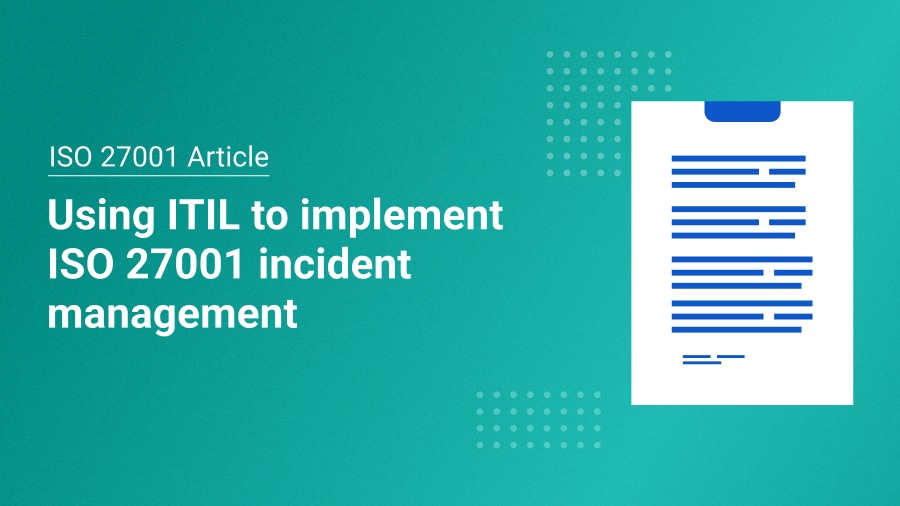
A robust incident response plan is the cornerstone of any effective cybersecurity strategy. Without a well-defined and regularly tested plan, organizations are ill-equipped to handle security breaches, leading to prolonged downtime, significant financial losses, and reputational damage. A comprehensive plan ensures a coordinated and efficient response, minimizing the impact of security incidents.A well-structured incident response plan Artikels the procedures and responsibilities for handling various security events.
It should be tailored to the specific risks and vulnerabilities of the organization, covering everything from minor security incidents to major data breaches. The plan’s effectiveness directly correlates with the organization’s ability to quickly contain, eradicate, and recover from security incidents, minimizing potential harm.
Key Components of a Robust Incident Response Plan
A robust incident response plan requires several key components to be effective. These components work together to ensure a coordinated and timely response to security incidents. Missing even one element can significantly weaken the overall effectiveness of the plan.
- Incident Identification and Reporting: Clear procedures for identifying potential security incidents, along with methods for reporting them to the appropriate personnel. This includes defining what constitutes an incident and establishing communication channels for reporting.
- Incident Containment: Strategies for isolating affected systems or data to prevent further damage or compromise. This might involve disconnecting infected machines from the network or blocking malicious traffic.
- Eradication: Procedures for removing malware, vulnerabilities, or other threats from affected systems. This could involve using antivirus software, patching vulnerabilities, or restoring systems from backups.
- Recovery: Steps for restoring affected systems and data to their operational state. This may include restoring data from backups, reinstalling software, and reconfiguring systems.
- Post-Incident Activity: Processes for analyzing the incident, identifying root causes, implementing preventative measures, and updating the incident response plan itself. This is crucial for continuous improvement.
- Communication Plan: A clearly defined strategy for communicating with stakeholders, including employees, customers, partners, and regulatory bodies, during and after an incident. This is especially critical during a data breach.
Effective Incident Response Procedures for Different Types of Security Incidents
The specific procedures within an incident response plan should vary depending on the type of security incident. A generic plan is not sufficient; instead, organizations should develop tailored procedures for common scenarios.
- Phishing Attacks: Procedures should include immediate suspension of compromised accounts, investigation of potential data exposure, user education on phishing awareness, and review of security awareness training effectiveness.
- Malware Infections: Procedures should Artikel steps for isolating infected systems, removing malware, restoring data from backups, patching vulnerabilities, and reviewing security controls.
- Data Breaches: Procedures should cover immediate containment, notification of affected individuals and regulatory bodies, forensic investigation, remediation of vulnerabilities, and legal counsel engagement.
- Denial-of-Service Attacks: Procedures should focus on mitigating the attack, identifying the source, implementing protective measures (e.g., DDoS mitigation services), and restoring service.
Testing and Updating the Incident Response Plan
Regular testing and updating are crucial to ensure the plan’s effectiveness. A plan that isn’t tested is just a document; it won’t work in a real-world emergency.
- Tabletop Exercises: Simulated scenarios where team members walk through the incident response process, identifying potential weaknesses and improving coordination.
- Incident Simulations: More realistic simulations that involve actual system compromise or data breach, allowing for a more comprehensive test of the plan.
- Regular Reviews: The plan should be reviewed and updated at least annually, or more frequently if significant changes occur in the organization’s IT infrastructure or security landscape.
Step-by-Step Guide for Handling a Data Breach
A data breach requires a swift and coordinated response. Delay can exacerbate the damage.
- Identify and Contain: Immediately identify the breach, isolate affected systems, and prevent further data exfiltration.
- Investigate: Conduct a thorough forensic investigation to determine the extent of the breach, the source, and the affected data.
- Notify: Notify affected individuals and regulatory bodies as required by law and best practices. Transparency is key.
- Remediate: Address vulnerabilities that allowed the breach to occur, implementing security controls to prevent future incidents.
- Recover: Restore affected systems and data, ensuring business continuity.
- Review and Improve: Analyze the incident to identify lessons learned and update the incident response plan to prevent similar breaches in the future.
Lack of Regular Monitoring and Review
Setting up an Information Security Management System (ISMS) compliant with ISO 27001 is a significant undertaking. However, the work doesn’t end with implementation. Continuous monitoring and review are crucial for maintaining the effectiveness of your security controls and ensuring ongoing compliance. Without regular checks, vulnerabilities can fester, incidents can go undetected, and your organization’s sensitive data remains at risk.Regular monitoring provides a pulse on the health of your ISMS, highlighting areas needing attention before they escalate into major breaches.
It allows for proactive adjustments, ensuring your security posture adapts to evolving threats and internal changes. This proactive approach minimizes risks and protects your organization’s reputation and assets.
Effective Monitoring Tools and Techniques
Implementing effective monitoring requires a multi-faceted approach. This involves leveraging a variety of tools and techniques to gain a comprehensive view of your security landscape. Different tools are suitable for different aspects of your security infrastructure.
For example, Security Information and Event Management (SIEM) systems aggregate logs from various sources, providing a centralized view of security events. These systems can be configured to trigger alerts based on predefined rules, such as suspicious login attempts or unusual network activity. Intrusion Detection/Prevention Systems (IDS/IPS) actively monitor network traffic for malicious activity, blocking or alerting on suspicious patterns.
Vulnerability scanners regularly assess your systems for known weaknesses, providing a prioritized list of vulnerabilities to address. Database activity monitoring tools track database access and changes, identifying unauthorized or malicious actions. Finally, regular penetration testing simulates real-world attacks to identify vulnerabilities in your defenses.
Security Log Analysis and Threat Identification
Security logs are a treasure trove of information, but they’re only useful if analyzed effectively. Manual review of logs is often impractical due to sheer volume. Automated tools and techniques are essential for efficient analysis.
SIEM systems, as mentioned earlier, play a crucial role in log analysis. They can correlate events from different sources, identifying patterns indicative of attacks. For instance, a SIEM might detect a series of failed login attempts followed by a successful login from an unusual location, suggesting a potential compromise. Sophisticated analytics techniques, such as machine learning, can be used to identify anomalies and predict potential threats.
These techniques can automatically flag suspicious activities that might otherwise go unnoticed. Regularly reviewing these alerts and investigating suspicious activity is paramount.
Navigating ISO 27001 compliance can be tricky; common pitfalls include inadequate risk assessments and weak access controls. Successfully addressing these often requires robust cloud security, which is where solutions like bitglass and the rise of cloud security posture management become invaluable. By strengthening your cloud posture, you’ll significantly reduce your vulnerability and improve your chances of a smooth ISO 27001 audit.
ISMS Review and Update Schedule
A formal schedule for reviewing and updating your ISMS is essential for maintaining its effectiveness. This schedule should be documented and followed consistently. A yearly review is a common practice, but more frequent reviews might be necessary depending on your organization’s risk profile and changes in the threat landscape.
The review process should involve a comprehensive assessment of your ISMS, including its effectiveness in mitigating risks, compliance with relevant regulations, and alignment with business objectives. The review should identify areas for improvement and lead to specific actions to address any identified gaps. These actions should be documented and tracked to ensure they are completed. The updated ISMS documentation should reflect these changes.
Consider scheduling quarterly reviews of specific security controls, such as access management or incident response procedures, to ensure their ongoing effectiveness. This tiered approach allows for frequent monitoring of critical areas while maintaining a manageable overall review schedule.
Poor Documentation and Record Keeping
Failing to maintain comprehensive and accurate security documentation is a major pitfall for organizations aiming for ISO 27001 certification. It undermines the entire information security management system (ISMS) by hindering effective risk management, audit trails, and compliance demonstration. Without proper documentation, you can’t prove you’re doing what you say you’re doing, leaving your organization vulnerable to non-compliance penalties and security breaches.Maintaining robust documentation is crucial for demonstrating compliance with ISO 27001 requirements.
It provides a clear and auditable record of your organization’s security controls, policies, and procedures. This documentation serves as a vital reference point for staff, auditors, and management, ensuring consistent application of security measures across the organization. It also facilitates continuous improvement by providing a basis for reviewing and updating security practices.
Essential Security Documentation for ISO 27001 Compliance, Common iso iec 27001 pitfalls and how to avoid them
The ISO 27001 standard doesn’t prescribe a specific list of documents, but rather Artikels the requirements for an ISMS. However, several types of documentation are essential for demonstrating compliance. These documents should be regularly reviewed and updated to reflect changes in the organization’s environment and risk profile.
- Statement of Applicability (SoA): This document identifies the specific Annex A controls applicable to your organization’s context and explains why others are excluded.
- Risk Assessment Report: A detailed report outlining identified risks, their likelihood and impact, and the chosen risk treatment strategies.
- Security Policies: Formal statements defining the organization’s security objectives and guidelines for achieving them, covering areas like acceptable use, data classification, and incident response.
- Procedures: Step-by-step instructions detailing how specific security controls are implemented and maintained. Examples include password management procedures, incident reporting procedures, and vulnerability management procedures.
- Records of Control Implementation: Evidence demonstrating the implementation and effectiveness of security controls, such as logs, test results, and audit reports.
- Security Awareness Training Materials: Materials used for educating employees on security policies, procedures, and best practices.
- Incident Response Plan: A detailed plan outlining the steps to be taken in the event of a security incident, including roles and responsibilities, communication protocols, and recovery procedures.
Secure and Efficient Storage of Security Documentation
Security documentation must be stored securely and efficiently to ensure its accessibility, integrity, and confidentiality. A well-structured system is key.This could involve a combination of physical and digital storage methods. Physical documents should be stored in secure, controlled environments with restricted access. Digital documents should be stored on secure servers with access controls and version control. Consider using a document management system (DMS) to streamline the storage, retrieval, and version control of documents.
Regular backups are essential to protect against data loss. Access to documents should be granted on a need-to-know basis.
Managing and Updating Security Documentation
A robust system for managing and updating security documentation throughout its lifecycle is crucial. This involves establishing clear responsibilities for document creation, review, approval, and update. A defined document lifecycle should include stages such as creation, review, approval, distribution, maintenance, and archival or disposal. Regular reviews should be conducted to ensure the documentation remains accurate, relevant, and up-to-date.
Version control is essential to track changes and maintain the integrity of the documents. A centralized repository, perhaps a DMS, is ideal for managing all documentation in a structured manner. The system should include processes for handling obsolete documents and ensuring their secure disposal. Consider using a document numbering system for easy identification and tracking. This system should be documented itself, outlining the process for creating, reviewing, approving, and updating security documentation.
Failure to Address Third-Party Risks
In today’s interconnected world, organizations rarely operate in isolation. We rely heavily on third-party vendors and suppliers for various services, from cloud infrastructure to software development and even essential business processes. This reliance, however, introduces significant security risks. Failing to adequately assess and manage these risks can leave your organization vulnerable to breaches, data loss, and reputational damage.
Understanding and mitigating these risks is crucial for maintaining a robust security posture.Third-party risk management presents unique challenges. Unlike internal systems, you have limited control over a vendor’s security practices. This lack of control necessitates a proactive and rigorous approach to assessing, monitoring, and managing the risks associated with these external partners. The consequences of a poorly managed third-party relationship can be far-reaching, potentially impacting your compliance obligations, financial stability, and customer trust.
Due Diligence Processes for Assessing Third-Party Security Controls
Effective due diligence involves a multi-faceted approach that goes beyond simple questionnaires. It requires a thorough investigation into a vendor’s security posture, encompassing their physical security, data protection measures, incident response capabilities, and overall security culture. This can involve reviewing their security certifications (like ISO 27001), conducting on-site assessments, and examining their security policies and procedures. A strong due diligence process should also verify the vendor’s insurance coverage and their ability to respond effectively to security incidents.
For example, a thorough review might uncover vulnerabilities in a vendor’s cloud infrastructure or a lack of robust access controls, allowing for proactive mitigation strategies.
Establishing and Monitoring Security Agreements with Third-Party Providers
Formal agreements are essential for outlining security expectations and responsibilities. These agreements, often called Service Level Agreements (SLAs) or security addendums, should clearly define the vendor’s security obligations, including data protection, incident reporting procedures, and audit rights. Regular monitoring and review of these agreements are vital to ensure ongoing compliance. Key performance indicators (KPIs) should be established to track the vendor’s performance against the agreed-upon security standards.
For instance, an SLA might specify a maximum downtime for their services and include penalties for non-compliance. Regular audits and security assessments should be incorporated to verify the vendor’s adherence to the agreement.
Third-Party Security Assessment Questionnaire Template
Below is a sample questionnaire, remember to adapt it to your specific needs and context.
| Section | Question |
|---|---|
| Company Information | What is your company’s name and address? |
| Security Policies | Do you have a written information security policy? |
| Data Security | What security measures do you have in place to protect customer data? |
| Access Control | What access control mechanisms do you utilize? |
| Incident Response | Describe your incident response plan. |
| Vulnerability Management | How do you identify and remediate vulnerabilities? |
| Business Continuity | What business continuity and disaster recovery plans do you have in place? |
| Compliance | What relevant security standards and regulations do you comply with? |
| Insurance | Do you have cyber liability insurance? |
Ignoring Physical Security Controls
Physical security might seem like a secondary concern compared to the more abstract threats of cyberattacks, but neglecting it can have devastating consequences for your organization’s ISO 27001 compliance and overall security posture. A single physical breach can expose sensitive data, disrupt operations, and lead to significant financial losses. This section will explore common vulnerabilities and effective control measures to mitigate these risks.
Common Physical Security Vulnerabilities and Their Impact
Ignoring physical security leaves your organization vulnerable to a range of threats. Unauthorized access, theft of equipment or data, sabotage, and even natural disasters can all severely impact operations and data integrity. For example, a lack of access control could allow an intruder to steal laptops containing confidential client information, leading to a data breach and significant reputational damage.
Similarly, a failure to protect against environmental hazards, such as fire, could result in the complete loss of irreplaceable data and infrastructure. The impact can range from minor disruptions to catastrophic failures, depending on the nature and severity of the vulnerability.
Effective Physical Security Controls
Implementing robust physical security controls is crucial for mitigating these risks. Access control systems, such as key card readers or biometric scanners, restrict entry to authorized personnel only, preventing unauthorized access to sensitive areas. Surveillance cameras, strategically placed throughout the facility, act as a deterrent and provide visual evidence in case of incidents. Regular patrols by security personnel further enhance security and provide an additional layer of protection.
These measures not only prevent unauthorized access but also help deter criminal activity. For instance, a well-lit parking lot with visible security cameras can discourage theft and vandalism.
Environmental Controls: Temperature and Humidity Monitoring
Maintaining a stable environment is crucial for protecting sensitive equipment and data. Extreme temperatures and humidity can damage hardware, leading to data loss or system failure. Therefore, implementing environmental controls, such as temperature and humidity monitoring systems, is essential. These systems continuously monitor environmental conditions and alert personnel to any deviations from the optimal range. This proactive approach helps prevent costly equipment damage and ensures business continuity.
For example, a data center without proper temperature control could experience server failures during a heatwave, leading to significant downtime and data loss. Regular maintenance and calibration of these systems are also vital to ensure their accuracy and effectiveness.
Physical Security Risk Assessment Checklist
| Risk Factor | Mitigation Strategy |
|---|---|
| Unauthorized Access | Access control systems (key cards, biometric scanners), security guards, surveillance cameras |
| Theft | Secure storage for equipment and data, asset tracking systems, security personnel |
| Sabotage | Surveillance systems, intrusion detection systems, security personnel, background checks for employees |
| Natural Disasters (Fire, Flood) | Fire suppression systems, backup power generators, offsite data backups, disaster recovery plan |
| Environmental Hazards (Temperature, Humidity) | Environmental monitoring systems, HVAC systems, regular maintenance |
Epilogue
Successfully navigating the ISO 27001 landscape requires vigilance and a proactive approach. By understanding the common pitfalls and implementing the strategies Artikeld above, you can significantly reduce your organization’s vulnerability to security threats. Remember, a robust ISMS isn’t a one-time project; it’s an ongoing process of continuous improvement, monitoring, and adaptation. So, stay informed, stay vigilant, and stay secure!
Question & Answer Hub
What’s the difference between a risk assessment and a risk treatment?
A risk assessment identifies potential threats and vulnerabilities, analyzing their likelihood and impact. Risk treatment involves developing and implementing strategies to mitigate or eliminate those risks.
How often should I update my ISO 27001 ISMS?
Regular updates are crucial. At a minimum, annual reviews are recommended, but more frequent updates might be needed depending on changes in your organization or the threat landscape.
What are some cost-effective ways to improve security awareness training?
Use readily available online resources, gamification techniques, and short, focused training modules instead of lengthy, expensive courses. Regular, short quizzes can also be very effective.
Can I outsource my ISO 27001 compliance?
While you can outsource parts of the process, ultimately, responsibility for compliance rests with your organization. A consultant can help, but they can’t take over your obligations.



